
This is my poetry library. I collect books of poetry because I love poems and believe in buying books written by poets.
It’s true some of them are found, some traded. Some purposefully bought, some gifted by people I dearly love. Truth be told, poetry books are the only books I re-read. These shelves contain most of my poetry books. But not all of my poetry books. Because there are orphaned books of poetry scattered throughout my house—on the coffee tables in the living room, on the edge of the dining room table, in my upstairs study, sometimes even on a bathroom counter.
In this way, I feel as though books of poetry are leading the life gestured toward in the monotype image (made by my partner, who is a printmaker) that hangs beside the poetry-book bookshelf: “Cage Free Poetry” describes poems, poetry, and books of poetry in my house.
Once, a long long time ago, all my books of poetry were organized alphabetically by author (this was thanks to a poetry student I was honoured to mentor, who has now gone onto a masters in creative writing in the United States…again, a gesture to a kind of borderless poetics, a poetic migration, a cageless poetry…) but after a number of moves and many incidents of plucking poetry books willy-nilly off shelves and plunking them back without detailed attention, my books of poetry are back to living a cage free life.
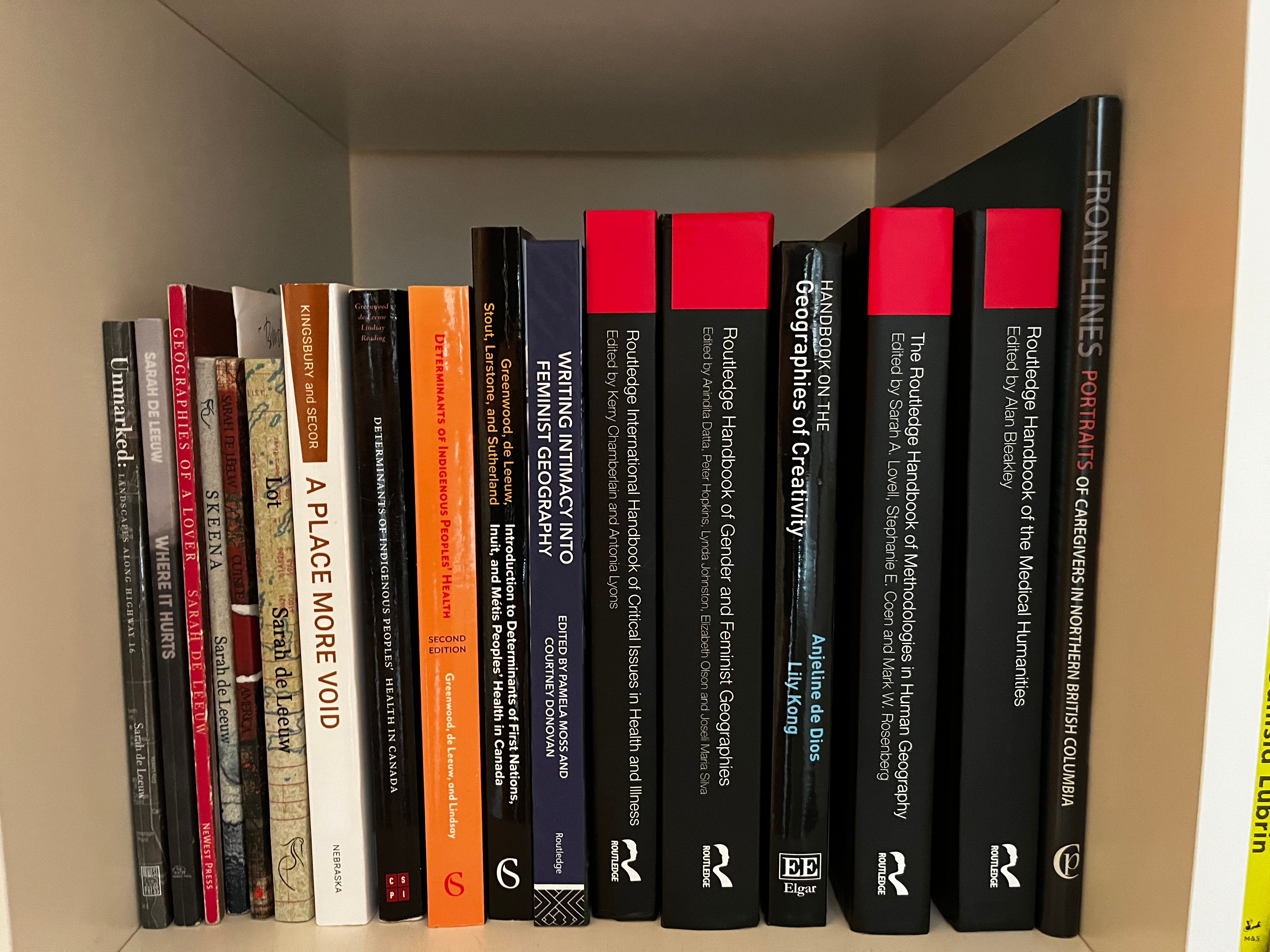
Writing is far from an egoless endeavor for me.
I still remember, vividly, the first time I saw my name in print, associated with a story I’d written. I was a first year Creative Writing student (majoring in poetry and creative non-fiction…I still count Stephen Hume as one of the most vital mentors I’ve ever worked with) and a junior writer at The Martlet, the University of Victoria’s independent student newspaper (since 1948!). My dream was to be a journalist writing poetry on the side.
Even though I’ve worked as a freelance journalist and columnist for a number of small community newspapers and radio stations, journalism never ended up being my career.
Instead, but I believe in great part because I have a Bachelor of Fine Arts in Creative Writing that taught me to write (and write and write and write and write and write some more!), I am now an academic…a career that fundamentally rests on writing. In addition to writing books of poetry and literary non-fiction, I write scholarly papers for academic journals and dozens of book chapters for scholarly texts. I also author and edit textbooks. The thing is, EVERY time I see my name associated with a piece of writing I wrote—be it a chapter in a handbook on geographic method or feminist theory, be it an essay in a magazine, a research paper on colonial violence, or a book of poetry—I get a jolty-charge of pleasure and excitement. The little zap of jubilation has never abated. I feel humbled and elated. I am reminded that I love the ACT and PRACTICE of writing, hard as it may be. This shelf, with a small collection of things I’ve written or edited or contributed writing to, reminds me that I love writing. That putting ideas on the public record, in the form of writing, is something I am, and have always been, fully committed to. That I love.
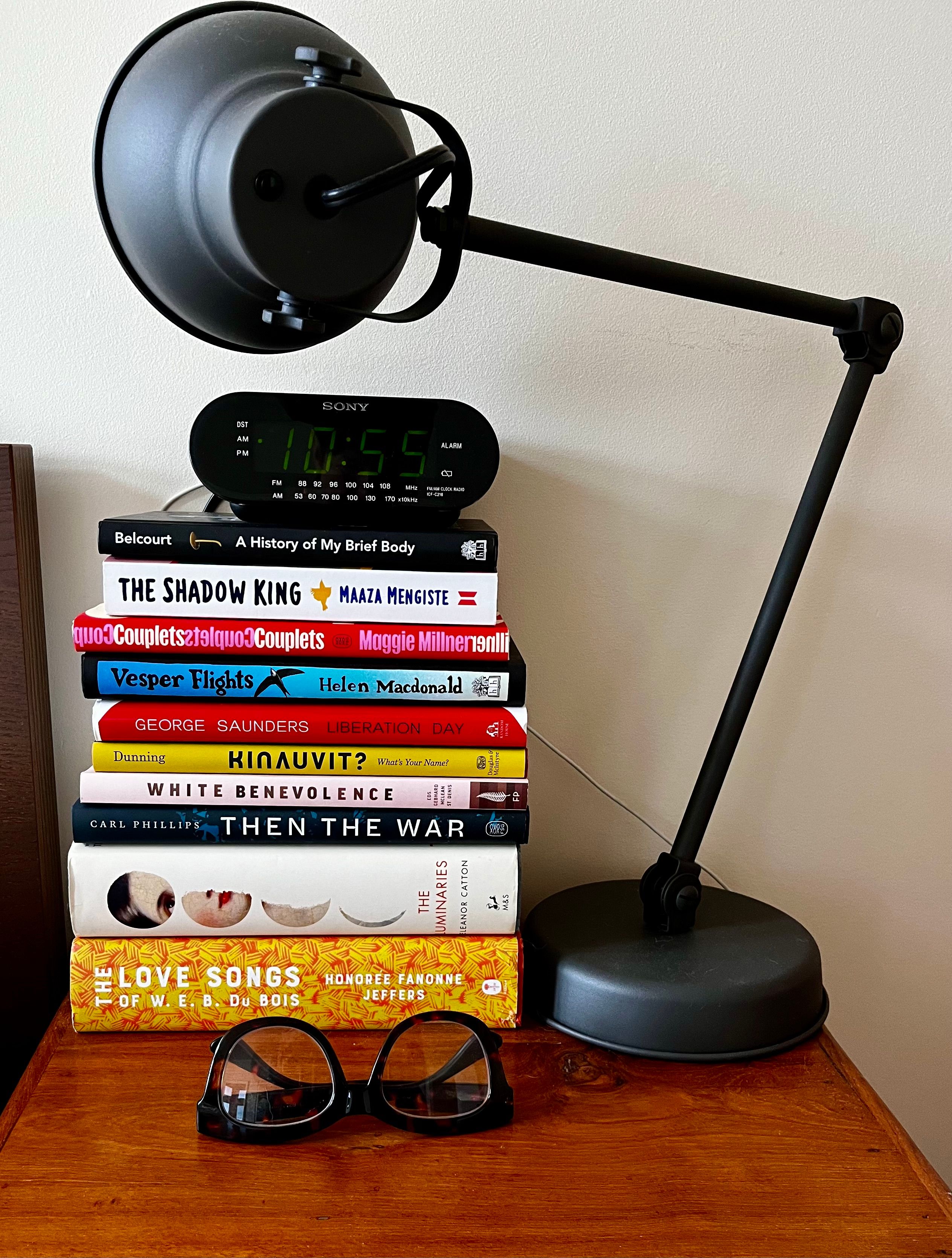
I read almost every night in bed before I go to sleep.
My “bedside library” contains the most “active” books in my house. They’re the ones I’m in the midst of reading, the ones I’m flipping through, the ones uppermost on my mind. The bed-side table shelf changes over quite quickly, and I should confess that I don’t finish all the books I start.
In this snapshot, for instance, there appear: several non-fiction books (I particularly loved Nora Dunning’s Kinauvit?); a book of poetry that I read bits and bobs with no particular order; and the brilliantly experimental poetic-novella Couplets, which is one of the best books I’ve read in the last five years, bar none. I didn’t finish The Luminaries, however. Importantly, none of these books live on my bedside shelf any longer. They’ve been replaced by stacks of lighter summer reading, including some excellent Japanese detective fiction by Yukito Ayatsuji and Keigo Higashino.
What stays steady and consistent on my bedside shelf are my reading glasses and my alarm clock. The collection of books, glasses, and alarm clock offer a fairly comprehensive insight into my life as a writer. I get up early (the alarm is usually set for 5:30 am), I’ve read so much in my life that my eyes are failing and I need bifocals, and whatever is stacked up next to my lamp offers insight into my most immediate thoughts and concerns.
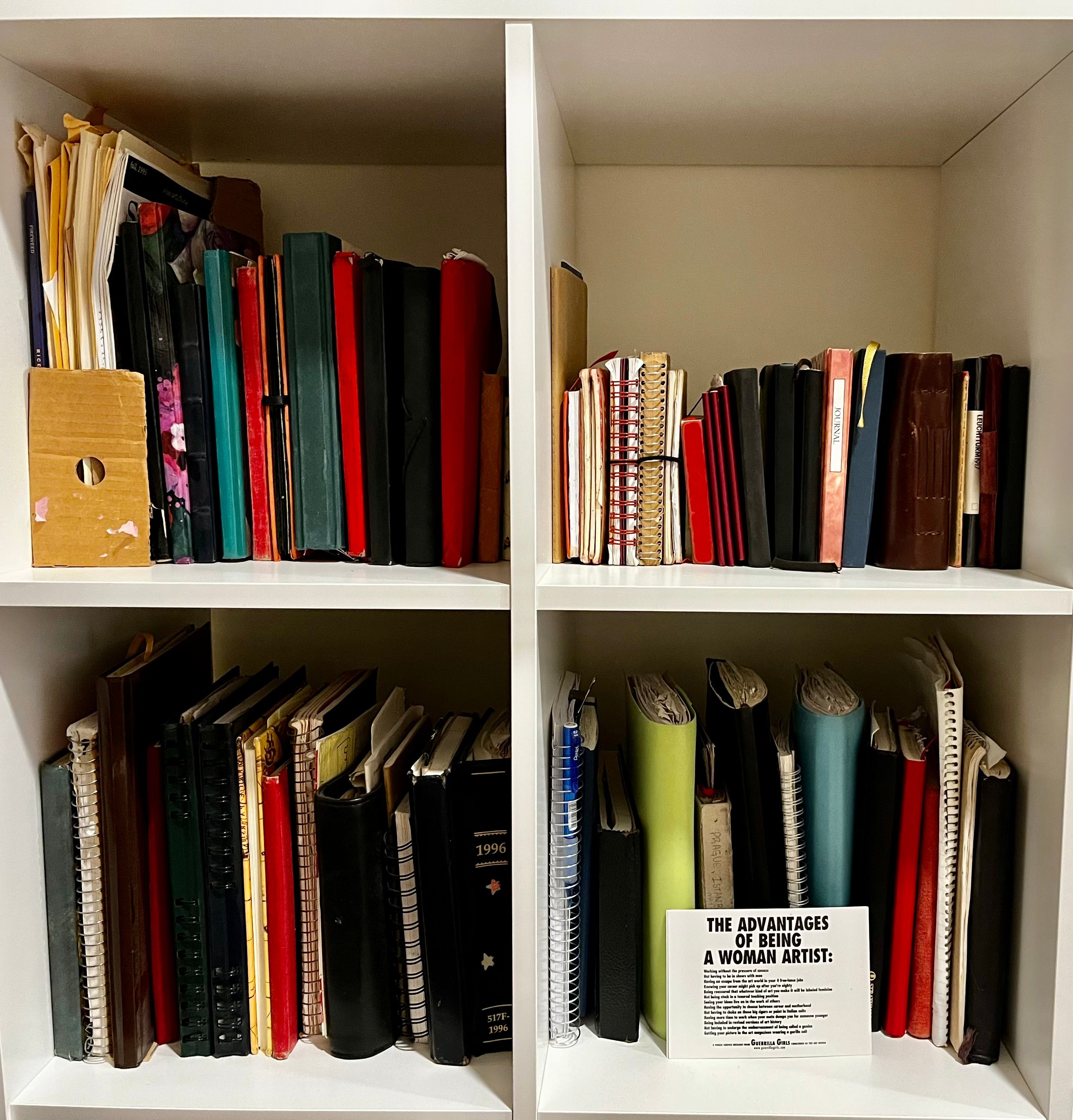
My earliest “sketchbooks” (that’s what I call the dozens of journals I have kept throughout my life) date back to 1981, when I was in Grade 4.
I almost always have a small, slightly-larger than palm-sized notebook with me. Mostly these sketchbooks contain short, very idiosyncratic and random, notes about things that catch my attention. Sometimes I jot down word combinations based on sounds I like. Sometimes I copy sentences that move me from books I’m reading, capture quick descriptions of observations about the world around me, or write a longer contemplative reflections about things I am trying to work out in my head. I am deep believer that the act of writing is a physical practice. I can’t begin to list the number of times people have said to me, “The paper (or story or essay or poem) is essentially already written—it’s totally all in my head, all I have to do is write it down…"
The “all have to do is write it down” part of that sentence is, I think, the biggest barrier people face in writing. Writing is writing. Writing isn’t an idea. It’s not a thought. It’s a DOING. The gap between something being in one’s head and down on the page is a gap as great as thinking about running a half marathon and actually running 21.5 km. For me, actively keeping sketch books is, in part, an act of exercising my writing muscles. While I am increasingly turning to my laptop or phone to write on, my sketchbooks still play an important role in keeping my writing practice active. Also, I have decades of weird “stuff” to return to when I’m not quite sure what to write about…
Finally, it should be noted that I orient to ALL my writing (academic, journalistic, and/or creative) as a feminist, as an anti-colonial queer-allied social justice activist…and that little tongue-in-cheek postcard about the "advantages of being a woman artist” reminds me that I’m still writing/working within heteronormative extractive capitalist patriarchy. Which is exhausting, but which keeps me motivated to write for change…
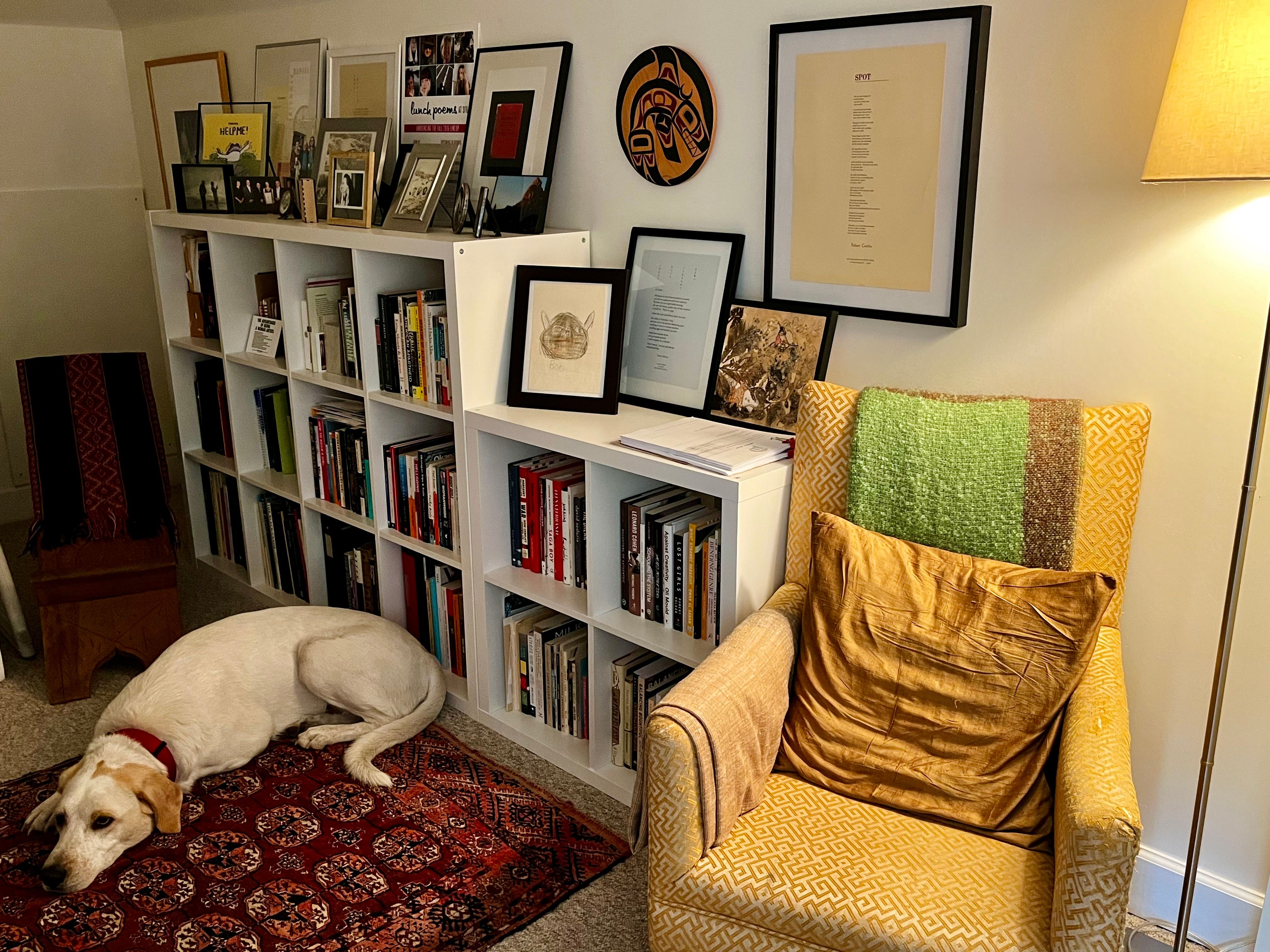
This is a photo of my reading and writing “nook” (as coined by one of my dearest friends). See the chair? It belonged to my Granny. In the far-left hand corner is another chair. It belonged to my Oma and Opa. The dog? That’s Zoot, my trusted walking and running companion. And there? That’s a framed portrait of my partner’s and my cat Boo, as rendered by the then 6 year old child of one of my oldest friends in the world. And that’s a poem by Robert Creeley (about a dog!) printed in Prince George by the poet Barry MacKinnon. “Spot” is hanging beside a hand painted cedar medallion of a Killer Whale. I am deeply privileged to have “a room of my own”—I do not have children and, at heart, am quite an antisocial homebody. This does not mean I don’t value, IMMENSELY, the vast and varied networks of community and friendships I have around the world—it’s just that if push came to shove, I really love nothing more than to sit alone, with my dog, and read and write. I am deeply convinced that READING is the most integral work of writing. To write, or to be a writer, we must also be readers. These shelves are filled with books and mementos of readings and events I count myself deeply humbled to have participated in. This nook of shelves and chairs and dog reflect all that allows me to be a writer.
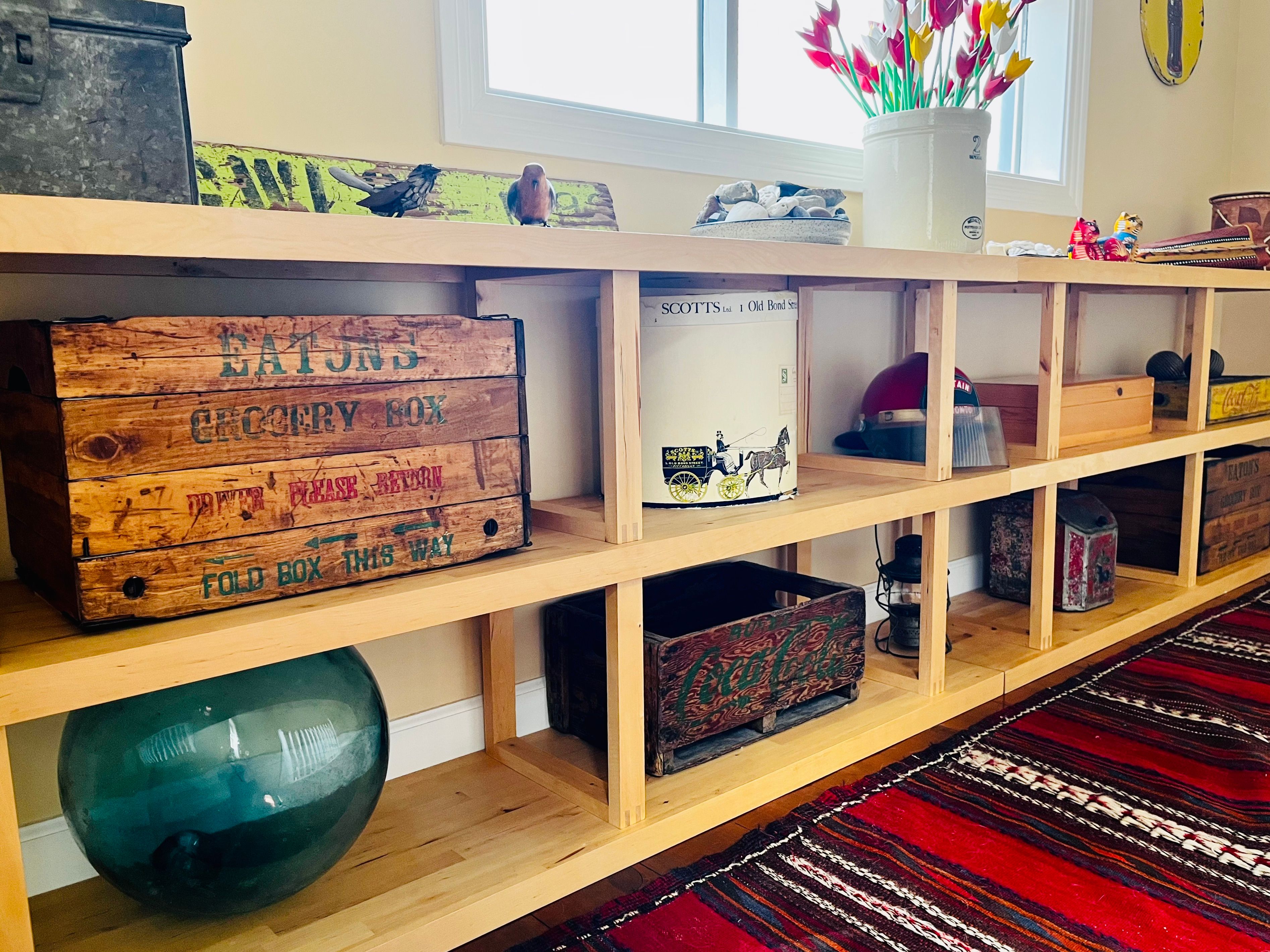
Bookshelves in our house are also places where things of memory live. They are memory libraries.
That glassball?
Yes! It’s a glass float ball from Japan. A friend and I found TWO of them in 2018. It’s about 19 pounds. And I packed it, on my back, for more than 70 km of a wilderness hike on the northwest coast of Vancouver Island (The Hesquiaht Trail). I remember when the pilot flew in to pick my hiking partner and me up: he was expecting our packs to be lighter than when we’d set out six days earlier. And had budgeted plane fuel accordingly. He was very unhappy about the almost 40 pounds of glass balls we’d packed out and insisted he fly out with us. We absolutely refused to give ‘em up. And every time I see that ball, I’m reminded that sheer unadulterated stubbornness can mean beautiful things.
And that hat box?
It belonged to my Granny. Inside are fur hats from the 1940s, hats I will never wear but that still carry traces of my Granny’s perfume.
The grey pottery platter full of rocks and shells? The platter was given to me almost 20 years ago by two women I still count among my dearest of friends. All the beach flotsam and jetsam have been collected over my entire life, from Haida Gwaii to Hawaii, from Halifax to the coast of Texas, from the shores of the Skeena River to beaches on the Great Lakes.
I walk past these shelves every morning when I walk downstairs to start my day and every day when I return upstairs to our bedroom to end my day. The stuff these shelves make up the stories of my life. And one day, I look forward to writing about those stories.
Gallery
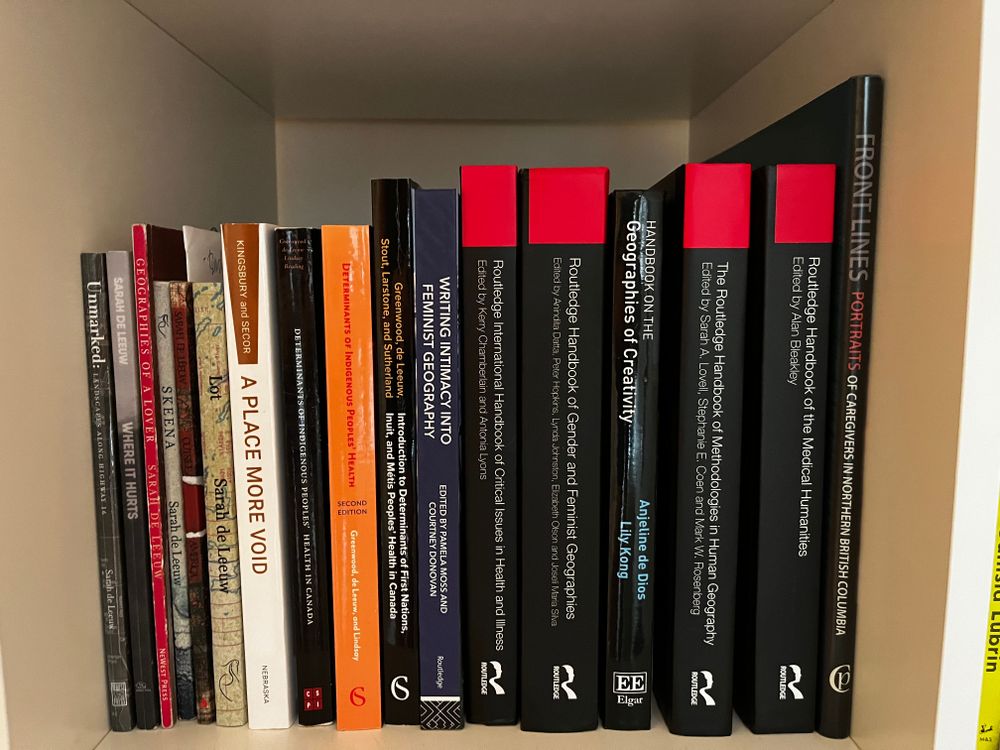



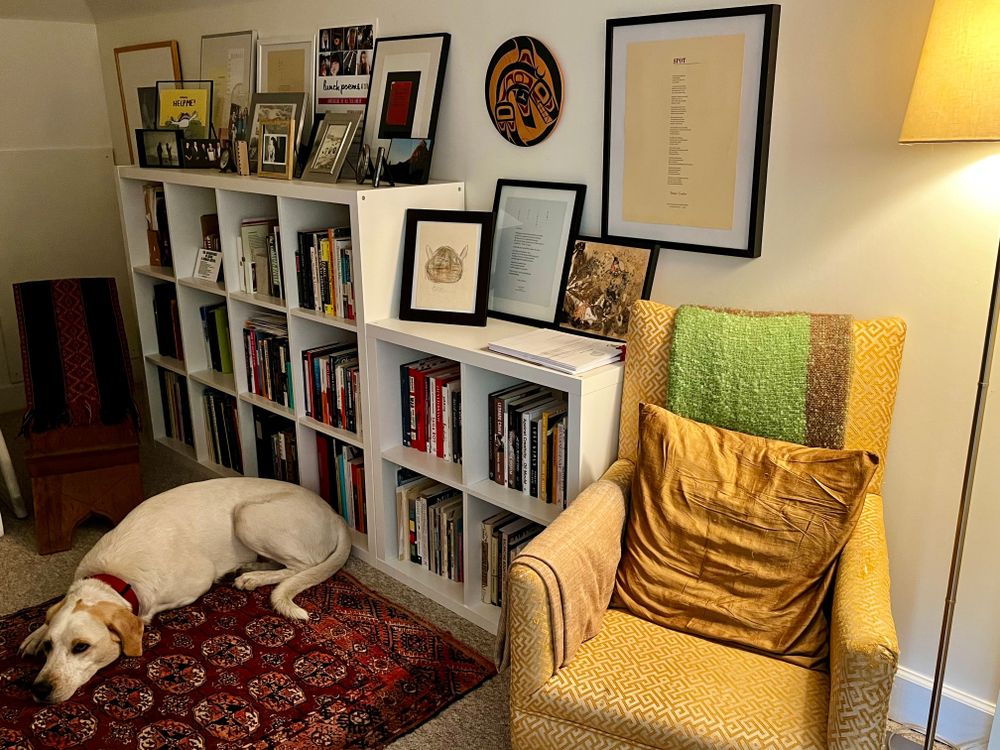

How-to-Cite
MLA
de Leeuw, Sarah. “Across Scales.” Shelf Portraits, 23 August, 2023, richlerlibrary.ca//shelf-portraits/across-scales. Accessed 3 August, 2025.
APA
de Leeuw, Sarah. (2023, August 23). Across Scales. Shelf Portraits. https://richlerlibrary.ca//shelf-portraits/across-scales
Chicago
de Leeuw, S. “Across Scales.” Shelf Portraits, 23 August, 2023, https://richlerlibrary.ca//shelf-portraits/across-scales.
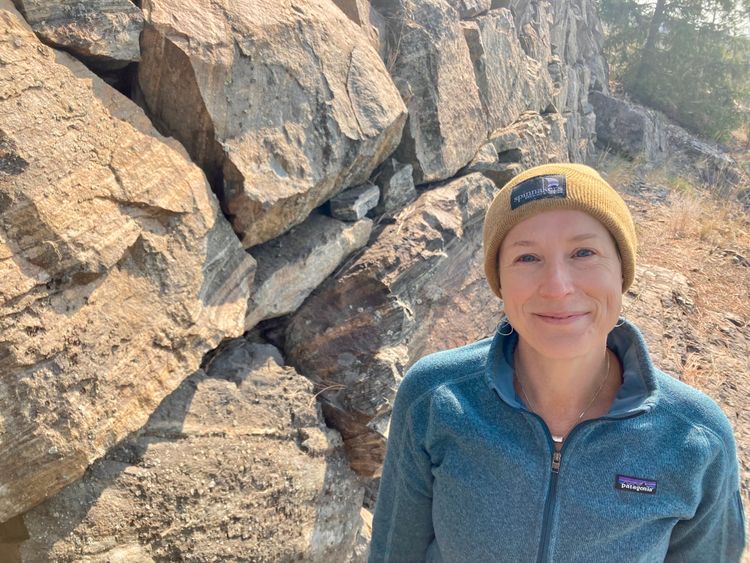
Sarah de Leeuw

Author of seven literary books (creative non-fiction and poetry) and co-editor of five academic texts (including Determinants of Indigenous Peoples’ Health in Canada: Beyond the Social and Geopoetics in Practice), Sarah de Leeuw’s most recent book of poetry, Lot, was named by CBC as one of Canada’s “Best of Canadian Poetry 2022” books. Nominated in 2017 for a Governor General’s Literary Prize in non-fiction, de Leeuw holds two CBC Literary Prizes for creative non-fiction and the 2013 Dorthey Livesay BC Book Prize for poetry. De Leeuw has a PhD in historical-cultural geography and is a Professor and Canada Research Chair (Humanities and Health Inequities) with the Northern Medical Program, a distributed site of UBC’s Faculty of Medicine. Dr. de Leeuw grew up on Haida Gwaii and in Terrace (Kitsumkalum Territory) and now divides her time between Lheidli T’enneh/Dakelh Territory (Prince George) and Syilx Territory (Okanagan Centre), British Columbia.